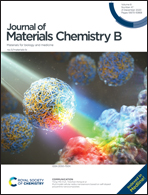Preparation of sulfur-doped carbon quantum dots from lignin as a sensor to detect Sudan I in an acidic environment†
Abstract
To achieve a rapid and facile quantitative evaluation of Sudan I illegally added in ketchup, fluorescent carbon quantum dots with excellent stability in acidic environments are required as the actual pH value of ketchup is close to 4.0. In this paper, we developed a green approach to prepare sulfur-doped carbon quantum dots (SCQDs) via hydrothermal treatment of lignin, isolated from pre-hydrolysis liquor, in sulfuric acid solution. The resultant SCQDs from lignin possessed sulfur-containing groups, which exhibited excellent fluorescence with a quantum yield up to 13.5% and good stability in acidic environments with a wide pH range of 0–5.0. Therefore, the SCQDs were successfully employed as a sensor to detect Sudan I in acidic solutions with excellent selectivity and sensitivity. The linear range for Sudan I was 0–40 μM, while the limit of detection was 0.12 μM. In addition, the fluorescent indicator paper functionalized with SCQDs also showed outstanding selectivity to Sudan I. The proposed SCQD sensing system not only displayed application potential for quantitative evaluation of Sudan I dye in practical samples, but also provided a way to convert lignin-based waste into highly valued nanoscale materials.



 Please wait while we load your content...
Please wait while we load your content...